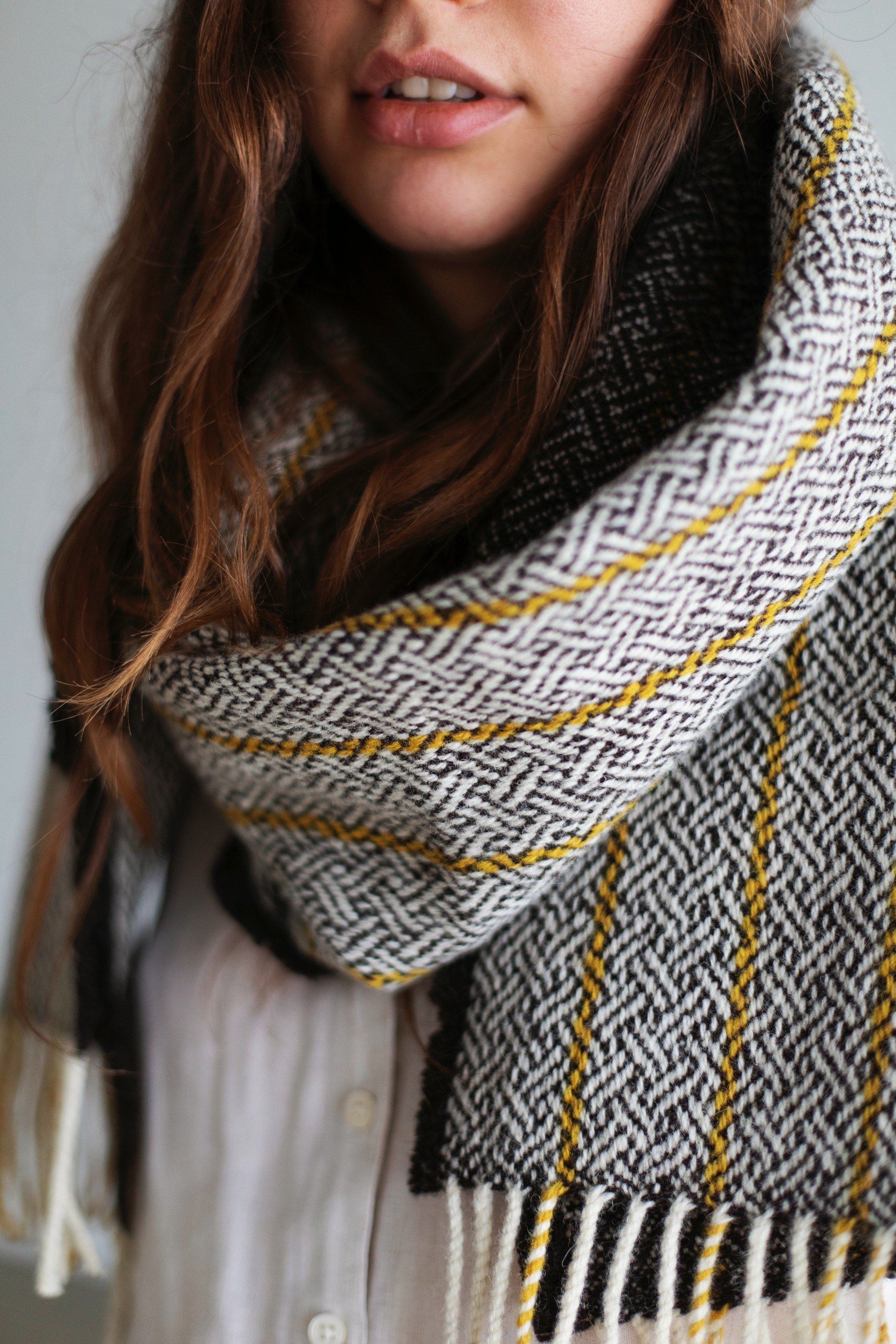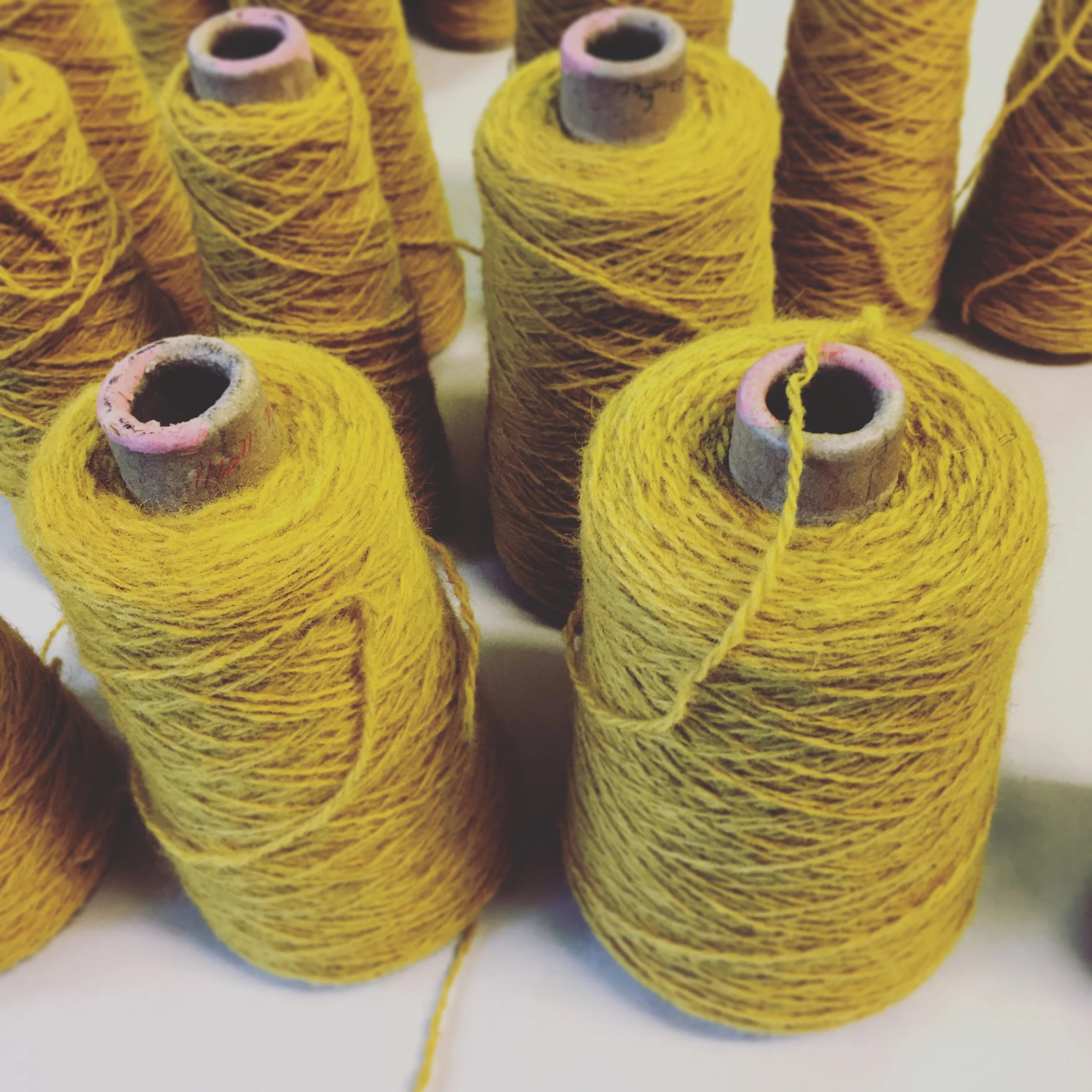The Story So Far..
I’ve been taking some time lately to reflect on the past few years since initiating the first Bristol Cloth production. It’s been such an incredible journey.
In 2015, the year of Bristol as European Green Capital, we launched the concept of Bristol Cloth with a regional competition to source a weave design for a bio-regionally sourced, processed and manufactured fabric.
A guest list of local Textile and Sustainability figures were invited to shortlist our entrants, including MShed (We The Curious), Brown In Town, Jack Bevan (The Ethicurean, Guardian, Earthly Collective) and Vanessa Arbuthnott.
Four runners up were short-listed and their designs were displayed in the Bristol European Green Capital Labspace in Bristol Harbourside for the local public to come in and vote for their favourite design, which would best reflect the culture and style of our beloved city.
Of the the four runners up the winning prize was awarded to Wendy Kotenko, lecturer at Falmouth University. A length of the hand loomed Bristol Cloth sample was awarded to her as a prize.
In 2018 I crowdfunded £18k to fund the first 200 metres of local regeneratively farmed, naturally dyed and woven cloth within a 15 mile radius of Bristol. Championing local heritage natural materials and craftsmanship. A symbol of the land, and the culture that dwells within it. A textile from local soil, farmed, processed and manufactured in a non-toxic way so that it is safe to create, wear, launder and give back to the earth at the end of its useful life cycle.
Farmed in a way which improves the soil as well as animal and human well-being. Produced in a way which respects and cares for the land and living, from soil -to-soil.
The production was featured on @bbcnews @bbccountryfile @bbcwestweather @skynews @telegraph @bbcbristol @selvedgemagazine and numerous other editorials and local papers.
The support and demand for this way of producing local textiles was so great that I pre-sold 200 metres of cloth in the first production via the Crowdfunder, and then immediately went into our second production, pre-selling 50% of the next 200 metres of cloth within 30 minutes of launching.
The 2nd Edition is made using the same basket weave design, with a new colour way - natural white and black un-dyed fleece colours with a naturally dyed mustard yellow colour pinstripe from Old Fustic or Dyer’s Mulberry wood chips. One of the most popular historical dyes to be sailed into England when the sea routes opened up.
This new production was an opportunity to streamline and improve the manufacturing process.
This time I bought the wool “in the fleece” to reduce costs and widen the profit margin for the project, working directly with the carder and spinner myself this time and having another element of the production to manage. The draw mback of this was the scheduling of an additional artisan mill in an already complex jigsaw puzzle of lead times, and the fact that the mill was relocating and needed 6 months to set up new equipment!
I decided to approach a commercial dye house with the request to hire their facilities to naturally dye my yarn, which was a huge relief to my back the 2nd time around! And the large equipment radically helped to improve colour consistency by dyeing several kg in one batch.
Managing the spinning and locating it close to the dyeing also helped to reduce transportation footprints, which was another great benefit.
This 2nd Edition production has helped me to see the project as a more scalable potential and make it more financially sustainable.
Delays in production leadtimes have been a huge lesson, in working with a chain of several small and artisan mills, we’ve had to wait in line for production slots, and often our slot has been pushed back several weeks, several times, amounting to delays of many months on the product release date.
The latest production since the 2nd Edition has been the limited run of Cashmere Edition blanket scarves. We made just 30 of these stunning pieces, each one unique from the next. Using the only source of Cashmere fibre actually farmed in England.
The farm is based in Exmoor, Devon, and uses a holistic approach to farming, in which the goats are cared for lovingly and the hair os hand combed to remove it naturally when it naturally starts to malt away each year.
We purchased the entire harvest of the year to make our collection of exceptionally special blanket scarves.
A generous 2 metres in length and nearly a metre wide, to wrap around oneself twice and be incredibly cosy.
The fibre is in its natural un-dyed state, a soft creamy beige, and dyed with organic British heritage madder root and indigo. For soft dusty pinks, peaches and sky to midnight blues.
The madder was dyed in our commercial facility again while the indigo was hand dip dyed as its such and skilled process and must be done by hand, dipping and washing over 30 times to acheive the darkest eblues over several days.
The weaving mill created a special design for us for this project which sees the ombre colours swathe over the warp and weft in unexpected ways, creating unusual patterns and blends.
The next step in this production will be to work with local dye farmers to create a 3rd edition which is entirely locally sourced. Our heritage dye colours are currently sourced from overseas, as the dye growing and supply industry in the UK has been unavailable for many decades, on a commercial scale. I believe this is now changing as many farmers and growers are starting to see the benefit to working with dye plants, as rotational crops, nitrogen fixers and as a beneficial source of additional income revenue. High value crops which takes up little space is of course a great idea. And our heritage dye plants tend to grow incredibly well in poor soil conditions, akin to over farmed fields, and with little maintainance.
The 3rd production, could also be an experiment in working with different dye colours and fleece colours, perhaps using only local plant mordants to fix colours, maybe blending in other local fibres, such as organic peace silk or alpaca..
One day I dream of also having a crop of local, sustainably farmed flax, hemp or nettle to work with.
As the owner and dyer behind Botanical inks, I also hope to have my own large natural dye facilities to work with, rather than hiring other spaces, although this is a wonderful opportunity to have available also and I’m very grateful to have access to these places and their equipment.
What ideas do you have for the Bristol Cloth 3rd Edition, which you would love to see become a reality..??!







